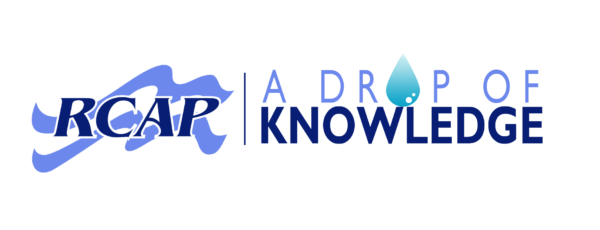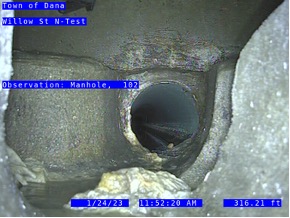Exploring Water, Health Infrastructure, Resilience and Learning (WHIRL)

Editor’s note: McElmurry is a contributing author for Drop of Knowledge and leader of a collaborative research project exploring the intersection of drinking water and public health. RCAP is working with the researchers on this project to provide the rural perspective. RCAP has provided feedback on the researchers’ survey instrument.

Water systems and public health systems grew up together and are interdependent in complex, and not always clearly, visible ways. A research program, Water, Health Infrastructure Resilience and Learning (WHIRL) funded by the National Science Foundation is exploring these interdependencies and will soon be distributing a survey to both water and public health professionals.
In 1914, the United States Public Health Service (PHS) adopted the first drinking water guidelines targeting microbial (coliform bacteria) and chemical (arsenic) contaminants (US Treasury, 1914). This led to the advent of centralized municipal drinking water systems that are credited with reducing nearly half of the total mortality, and three-quarters of the infant mortality, in major U.S. cities during the first half of the twentieth century (Cutler & Miller, 2005). In the 100+ years since the development of drinking water guidelines, these interdependent systems have developed through separate federal regulatory agencies (i.e., Environmental Protection Agency, Department of Health and Human Services), management frameworks, and even different professional and educational disciplines. As a result, many drinking water and public health systems are now highly disconnected (Levitt & March, 1988).
Disconnects between water and health systems are confounded by practices put in place after September 11, 2001. Many post 9/11 practices were designed to isolate water systems and restrict the flow of information, with the goal of protecting systems and facilities from potential terrorist attacks. However, these restrictions had the unintended consequence of making it more difficult to share information with key stakeholders, such as public health officials and the public. This may have contributed to a public that is largely not engaged, unaware and uninformed about how drinking water systems work and the importance of investing in their upkeep (Bipartisan Policy Center, 2017).
Both highly visible / public and “under the radar” events emphasize the growing need for a stronger connection between public health and drinking water. Day-to-day events (e.g., faulty, aging infrastructure that affects water quality) and disruptive weather (e.g., hurricanes, floods and droughts) that can lead to infectious disease outbreaks or human-induced disasters (e.g., chemical spills, contamination) are failures that can shut down drinking water services and have substantial adverse impacts on public health. Risks, hazards, and disruptions, even minor events that often go unnoticed, may illuminate interdependencies between drinking water and public health systems. If these interdependencies are critical, identifying these connections and strengthening them may enhance resilience.This is particularly true during periods immediately following events, when there are opportunities to learn, change and enhance system resilience (Sitkin, 1992; Turner 1976; May, 1992; Birkland, 2004).
In 2018, the National Science Foundation (NSF) funded a 4-year study to examine how drinking water and public health systems interact, with a focus on reducing risks of future disasters and enhancing the resilience of these two critical infrastructure systems. The project, entitled Water and Health Infrastructure Resilience and Learning (WHIRL), also aims to understand how these systems learn about and adapt to changes and how the public engages with these systems. The research is a collaboration between academics from Wayne State University, the University of Michigan, and Indiana University and the American Water Works Association, the Water Research Foundation, the Association of State Drinking Water Administrators, the Rural Community Assistance Partnership (RCAP), and the National Association of County and City Health Officials.
In collaboration with these partners, the WHIRL team has developed a survey questionnaire that will be distributed to water and health professionals over the coming weeks to collect information about how water systems and public health systems interact, both formally and informally. The survey includes questions about information exchange, communication, routine and non-routine interactions and the ways these groups learn from crises and disasters among other issues. The goal is to generate understanding about how drinking water-related hazards and disruptions unfold in ways that affect both drinking water and public health systems that can help in the construction of tools to detect undesirable events. In addition, the project will create new capacity to learn from the disruptions that will inevitably occur.
The WHIRL survey is available here. Broad participation from the water community is necessary to insure representative and reliable results. Summaries of results from this survey will be reported at conferences and in future editions of the Drop of Knowledge.
References:
- Bipartisan Policy Center (2017). Defeating Terrorists, Not Terrorism: Assessing U.S. Counterterrorism Policy from 9/11 to ISIS. Task force on terrorism and Ideology. Washington, D.C., Bipartisan Policy Center.
- Birkland, T. A. (2004). Learning and policy improvement after disaster: The case of aviation security. American Behavioral Scientist, 48(3), 341-364.
- Cutler, D., & Miller, G. (2005). The role of public health improvements in health advances: The twentieth-century United States. Demography, 42(1), 1-22. doi: 10.1353/dem.2005.0002
- Levitt, B., & March, J. G. (1988). Organizational learning. Annual Review of Sociology, 14(1), 319-338.
- Sitkin, S. B. (1992). Learning through failure: The strategy of small losses. Research in Organizational Behavior, 14, 231-266.
- Turner, B. A. (1976). The organizational and inter-organizational development of disasters. Administrative Science Quarterly, 21(3), 378-397.
- U.S. Treasury Department. (1914).
- The bacteriological standard for drinking water. Public Health Rep. 29:2959-2966.


